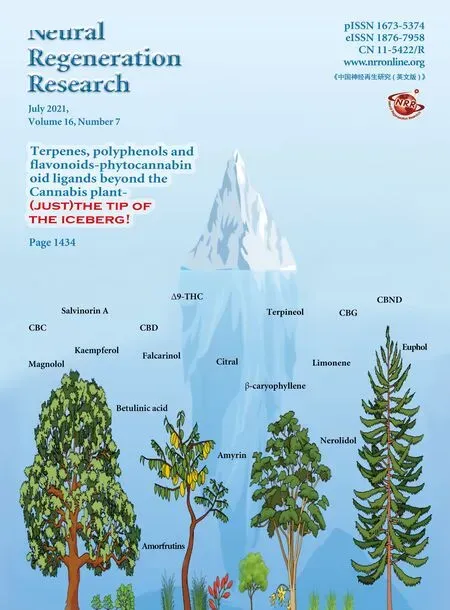Backdoor intrusion: retrotoxicity can explain targeted motor neuron death in amyotrophic lateral sclerosis
Randall D. McKinnon
To the editor:
Amyotrophic lateral sclerosis (ALS) is a fatal disease of unknown cause that selectively targets brain and spinal cord motor neurons (MNs). The lifetime risk is 1 in 2000, and most cases are sporadic although up to 10% of patients are predisposed by familial mutations in MN protection or repair genes (Bruijn et al.,2004). Risk factors include agrochemical exposure and trauma (Walters et al.,2019), although why they target MN is perplexing. Farmers are at a greater risk than non-farming rural residents (Kang et al, 2014), and ALS clusters occur in abrasion prone activities conducted on agrochemical treated fields such as baseball and soccer (Chio et al., 2005).These observations suggest that one mechanism for targeted loss of MNs may be the retrograde transport of neurotoxins subsequent to peripheral nerve injury, a process termed‘retrotoxicity’.
Trauma to muscles also injures peripheral nerve bundles and this promotes retrograde transport in axons (Bisby and Bulger, 1977). If toxins enter such wounds, they would thus be delivered through axons directly into neuronal soma, a process termed suicide transport(Wiley et al., 1982). We delivered a neurotoxin into the rodent sciatic nerve and demonstrated that suicide transport caused specific loss of lumbar spinal cord MN (Liang et al., 2021). We examined toxin delivery into sciatic nerves using the phosphoinositol 3′-kinase inhibitor wortmannin, with outcomes in the spinal cord measured by histochemistry and quantitative transcript analysis. Toxin delivery generated ipsilateral gliosis identified by astrocyte (glial fibrillary acidic protein [GFAP]) and microglial(ionized calcium-binding adaptor molecule 1 [Iba1]) markers and loss of the MN marker choline acetyltransferase(ChAT). Relative to sham controls, GFAP increased 300-fold after 14 days (P<0.001) and returned to baseline at day 90, while ChAT decreased by 70% after both 17 (P< 0.05) and 90 days (P< 0.01).Wortmannin also generated a forced motor defect that was absent in sham controls; exit times from a water tray were 20 seconds for wild-type mice, 40 seconds for sham (P< 0.001), and 450 seconds after wortmannin treatment (P< 0.01).
Retrotoxicity offers a simple explanation for targeted MN loss in ALS, as originally postulated by Yamamoto et al. (1985).However, this hypothesis lost favor when early animal studies, using broad scale toxins such as ricin, generated extensive peripheral nerve and soft tissue damage and significant lethality. In our studies, the use of a toxin that targets trophic factor dependent neurons appears to limit the damage to MN. It will thus be prudent to expand such studies to determine whether other agents, including agrochemicals, have comparable effects. If so, this would suggest that protective apparel can be a strategy for prevention. Retrograde transport could also be a direct route to deliver candidate MN therapeutics including drugs (Bruijn et al., 2004) and transgenes (Kaspar et al., 2003).
But why would the CNS offer such an easy backdoor access to neurotoxins?MNs survive for life and sophisticated mechanisms such as the blood-brainbarrier provide protection from ingested toxins. However, such protection strategies evolved in an environment different from current plethora of synthetic chemical toxins. Adaptation will be needed to solve these challenges for current inhabitants of our planet.
Supported by the New Jersey Commission on Spinal Cord Research.
Randall D. McKinnon*
Department of Neurosurgery and Member, The Cancer Institute of New Jersey, Rutgers-Robert Wood Johnson Medical School, Piscataway, NJ,USA
*Correspondence to:Randall D. McKinnon, PhD,mckinnon@rwjms.rutgers.edu.
https://orcid.org/0000-0002-7539-9613(Randall D. McKinnon)
Date of submission:August 25, 2020
Date of decision:August 31, 2020
Date of acceptance:September 10, 2020
Date of web publication:December 7, 2020
https://doi.org/10.4103/1673-5374.301037
How to cite this article:McKinnon RD (2021)Backdoor intrusion: retrotoxicity can explain targeted motor neuron death in amyotrophic lateral sclerosis. Neural Regen Res 16(7):1448.
Copyright license agreement:The Copyright License Agreement has been signed by the author before publication.
Plagiarism check:Checked twice by iThenticate.
Peer review:Externally peer reviewed.
Open access statement:This is an open access journal, and articles are distributed under the terms of the Creative Commons Attribution-NonCommercial-ShareAlike 4.0 License, which allows others to remix, tweak, and build upon the work non-commercially, as long as appropriate credit is given and the new creations are licensed under the identical terms.
- 中国神经再生研究(英文版)的其它文章
- Clusterin: a multifaceted protein in the brain
- The future of adenoassociated viral vectors for optogenetic peripheral nerve interfaces
- Are mitochondria the key to reduce the age-dependent decline in axon growth after spinal cord injury?
- A standardized crush tool to produce consistent retinal ganglion cell damage in mice
- The molecular profile of nerve repair: humans mirror rodents
- Neuritogenic function of microglia in maternal immune activation and autism spectrum disorders

